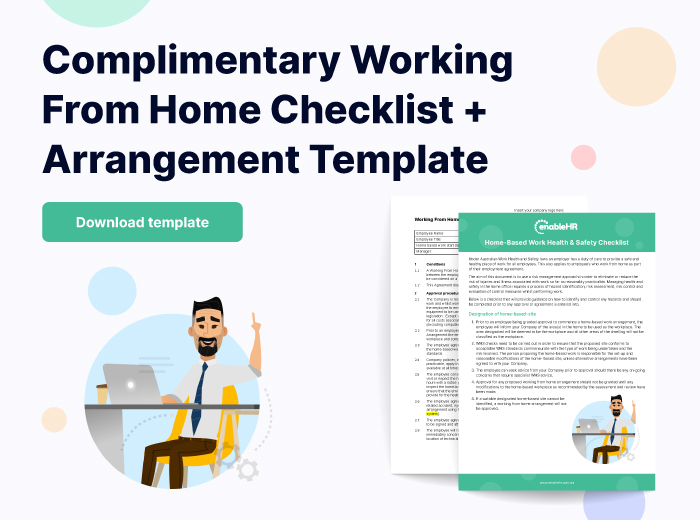Tips & tools to manage WHS remotely

04 March 2021

By Ceri Hohner
Working from home (WFH) may offer a dream lifestyle for many workers, but, for employers, those simple words can sometimes add extra stress to an already difficult job in employee and business management.
“What if my employee slacks off without supervision, and won’t answer their phone? Am I supposed to agree to them saving confidential files on their personal computers? What if they injure themselves tripping over their own poorly organised computer cables, and I get landed with a workers compensation claim?”
While all of these thoughts and concerns are valid, mutual trust and confidence between the employer and employee go a long way towards facilitating a strong remote-working relationship, but this is not always easy to achieve: perhaps the employee or their manager is new to the business, or performance is a concern. Maybe a deadly pandemic has swept the world and made it impossible for the employee to work in their usual centralised location, fragmenting your team into individual home offices. So what can you do?…
When there’s distance, communication is key
As such, one of the key components of a good WFH arrangement is communication. Two-way communication which utilises email/instant messaging where there are time zone issues or it’s more appropriate to note the communication in writing, and voice call/video call meetings to facilitate discussion and encourage connection between your staff.
And just like how we have contracts to agree on terms and conditions of employment, and policies to govern our employees’ conduct at work, WFH arrangements also flourish best when they’re clearly reflected in writing: namely, a robust set of documentation which clearly outlines both parties’ obligations and entitlements while the employee is WFH.
With a strong WFH agreement and a comprehensive work health and safety checklist for their home working environment, the guesswork and what-ifs are taken out of the equation, giving reassurance to both business and employee about what is expected of them. Safety responsibilities, performance indicators, personal commitments and flexible hours can be recognised and appropriately addressed, giving you as an employer the confidence to facilitate WFH arrangements without compromising on productivity.
Complimentary tools to support your business
“Well that sounds fantastic”, I hear you say, “But is there any way we can get hold of this documentation instantly and without paying a cent?”, you ask…
Well. thankfully, yes. The team at enableHR understand that times are tough for many businesses, so we’re offering free templates including a Working From Home Agreement and a Work From Home Safety Checklist so that you and your employees can set up new WFH arrangements or strengthen ones you may already have in place.
These templates are a good starting point for most businesses, but we cannot guarantee that they’re fit-for-purpose for all employee/employer situations due to the diverse industries and working arrangements out there. As such, if you have any questions, please contact us.
With good communication and robust documentation, you and your employees are well on your way to an efficient and productive remote-working future. There will always be hurdles to overcome in employee management, but you can protect your business by proactively reducing the risks of working from home.
For more information on working from home and how it can be managed effectively, contact enableHR.
Ceri Hohner is an associate and solicitor at FCB Workplace Law (our parent company) who has assisted clients across Australia from a range of industries and businesses.






